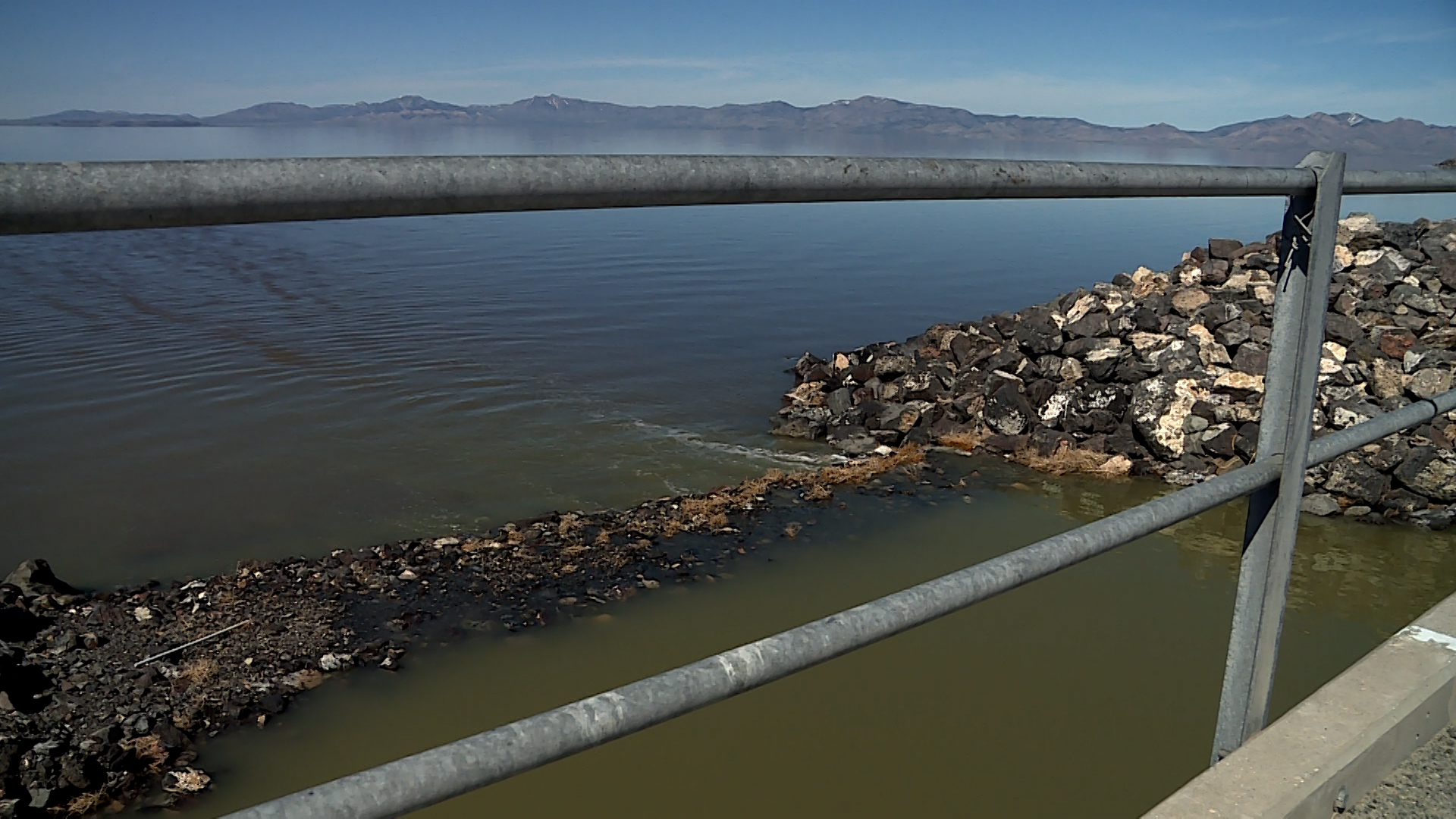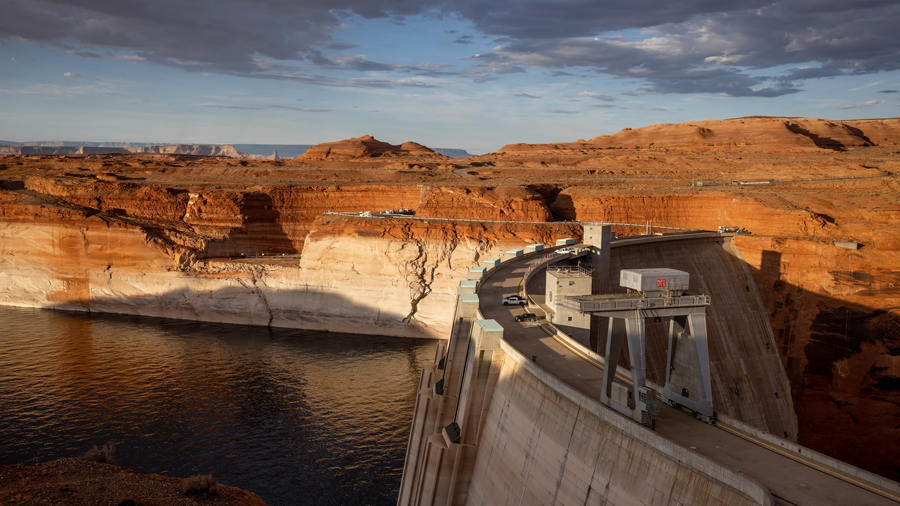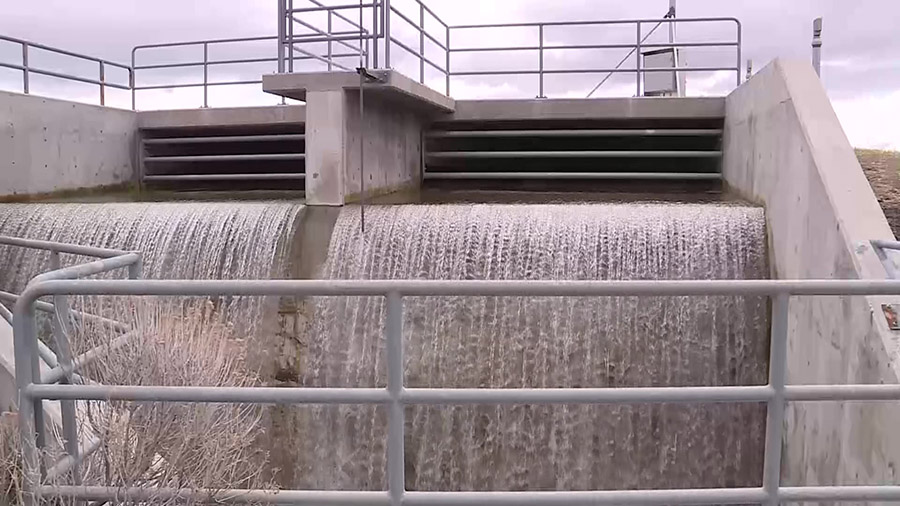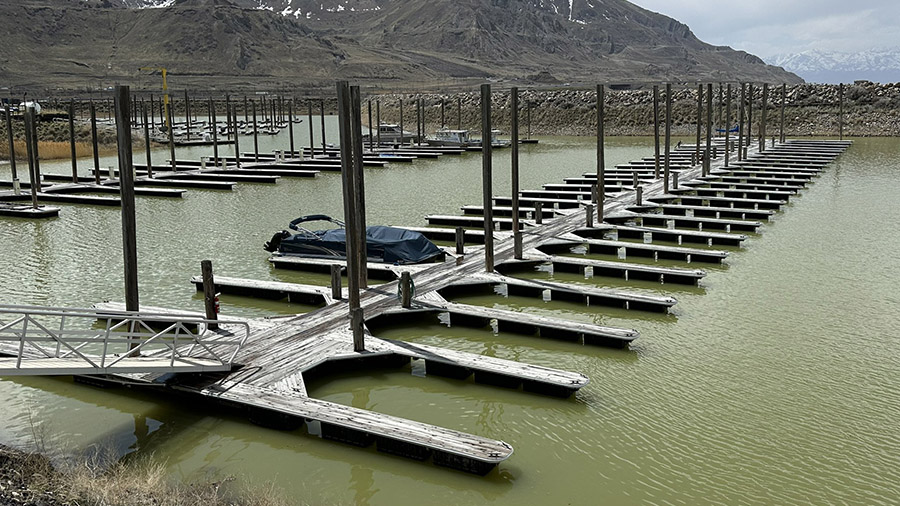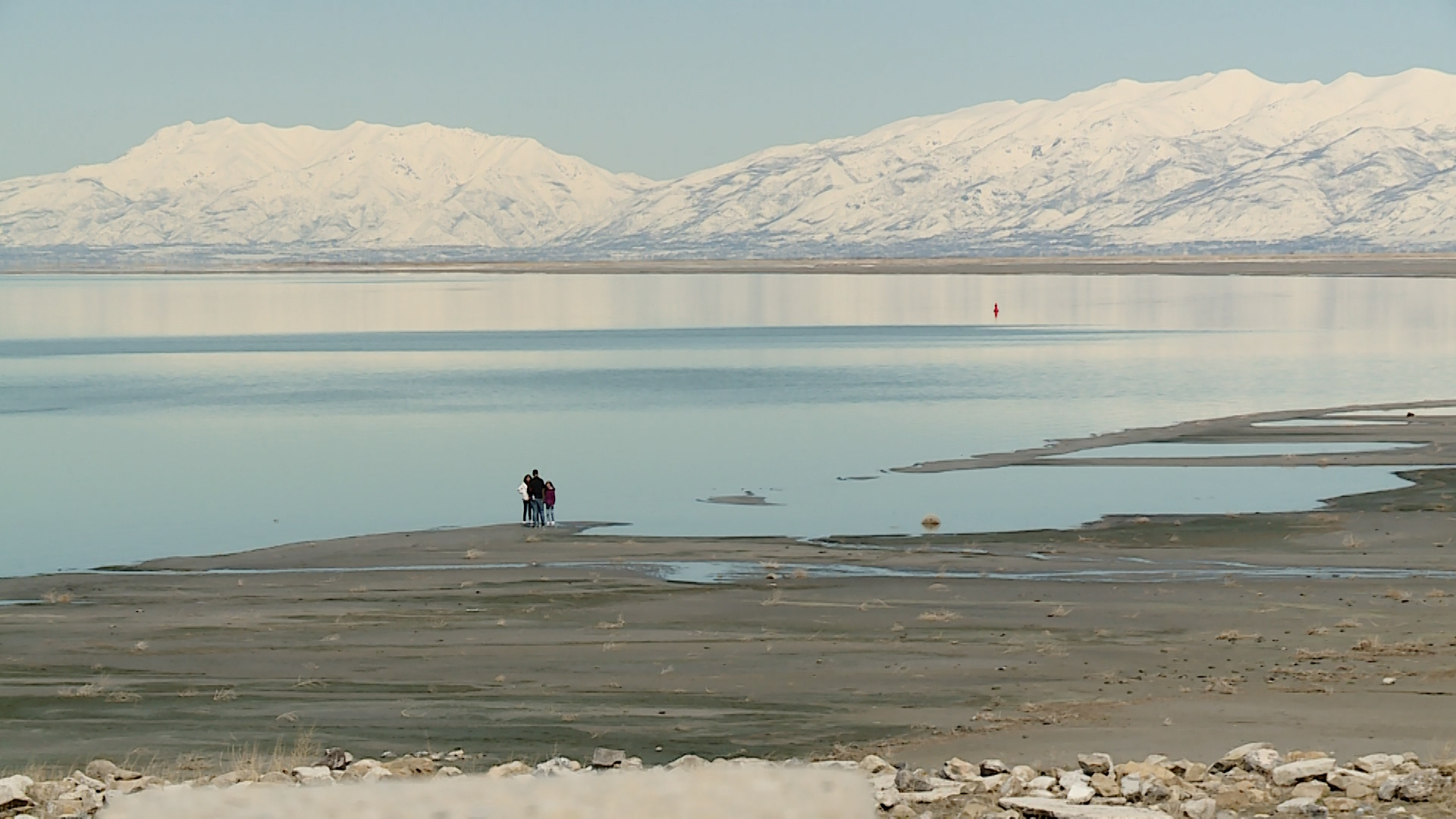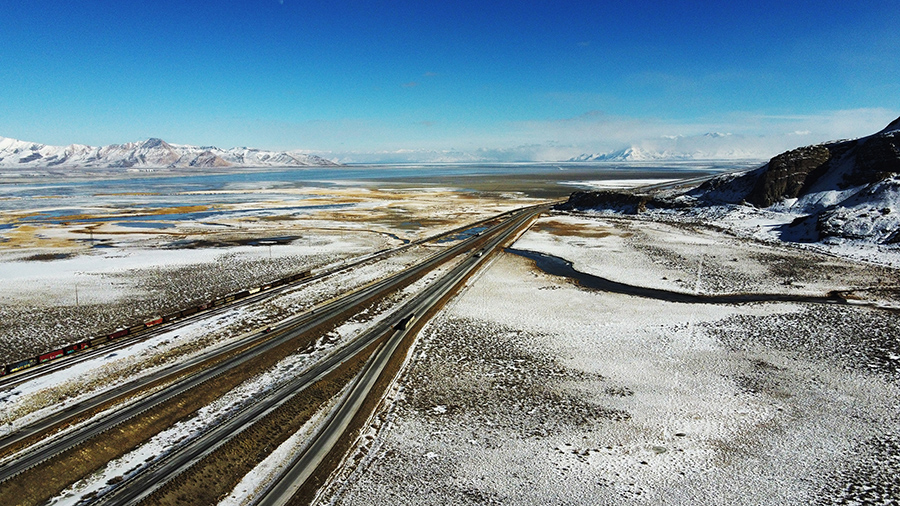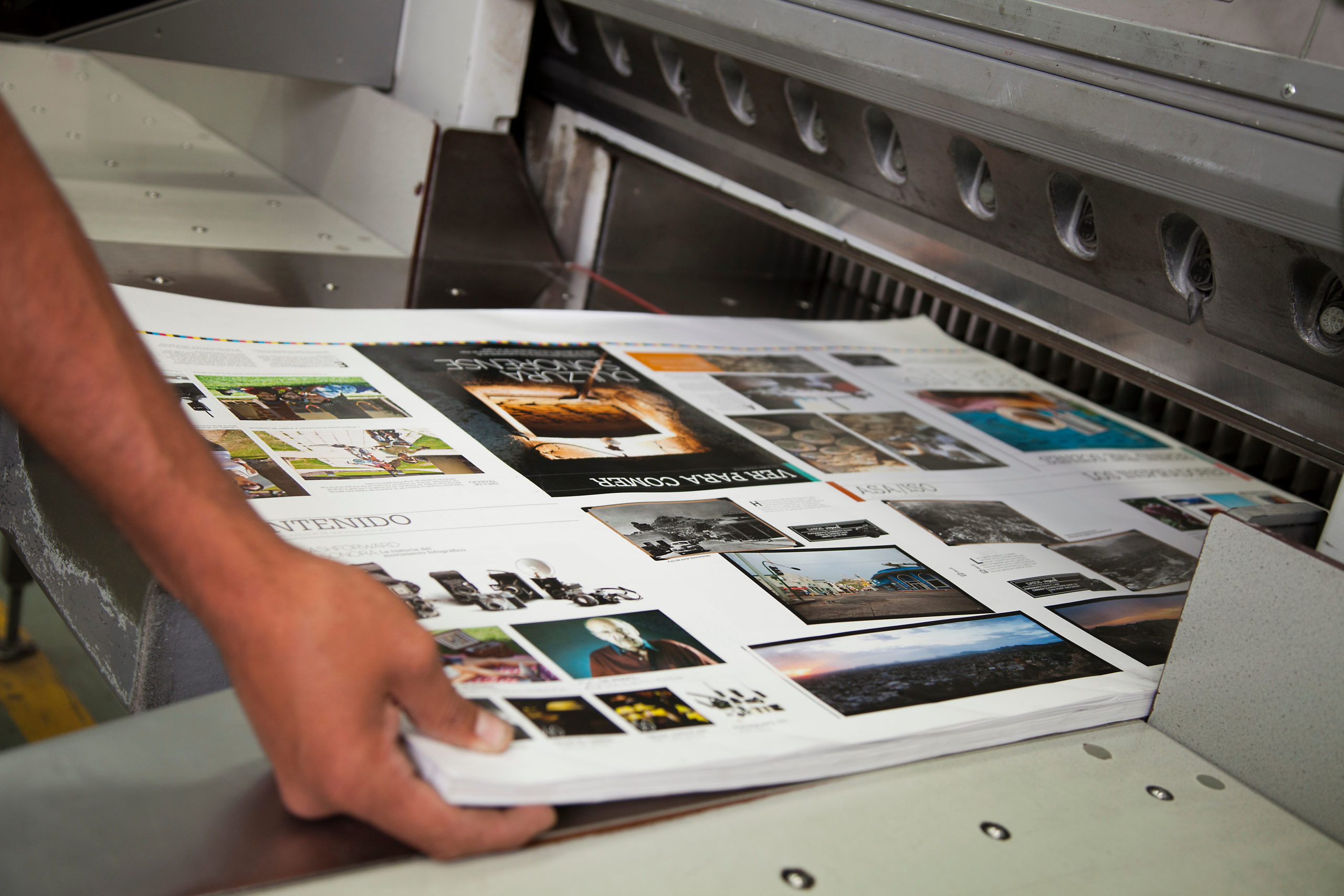GREAT SALT LAKE
History lessons: Are Utahns ‘waking up’ to the Great Salt Lake’s peril?
May 17, 2022, 2:56 PM | Updated: 3:06 pm
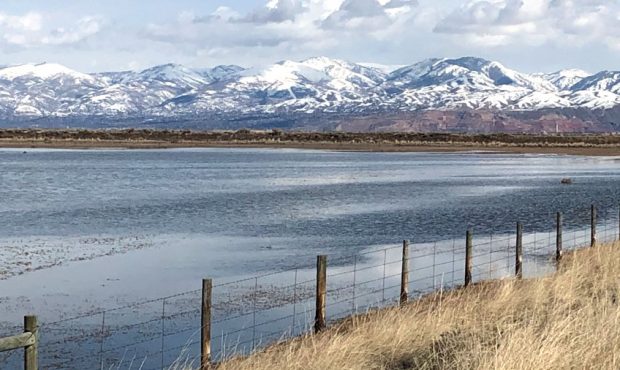
The Great Salt Lake, with the Wasatch Mountains in the background. (Photojournalist John Wilson)
(Photojournalist John Wilson)
This article is published through the Great Salt Lake Collaborative, a solutions journalism initiative that partners news, education and media organizations to help inform people about the plight of the Great Salt Lake — and what can be done to make a difference before it is too late. Read all of our stories at greatsaltlakenews.org.
SALT LAKE CITY — The Great Salt Lake, already vulnerable to climate fluctuations over the ages, has been “set up to fail” by human impacts, but some of those who are making such assessments nevertheless see hopeful signs in the state’s new enthusiasm to save the vital inland sea.
The lake is known as a terminal lake, meaning it has no outlet and therefore is exposed to major climate-driven changes. In the 1980s, the lake rose 4 meters, causing flooding and even prodding the state to build giant pumps to send the extra water into Utah’s west desert. But now, amid a Western megadrought, the lake is dipping to historic lows, made more significant by upstream diversions and consumption.
“It is normal for a terminal lake to fluctuate, but that makes it easy to excuse what is happening,” said Bonnie Baxter, a Westminster College biology professor who has studied the lake’s biological characteristics and the growing population’s impacts. “Now there really are stark differences and indicators that humans are having an impact on what would be a normal fluctuation.”
However, the deepening lake emergency moved the Utah Legislature this year to create a $40 million program to look at ways to preserve and restore the lake. Baxter, who heads Westminster’s Great Salt Lake Institute, said she sees signs of a groundswell of support for saving the lake.
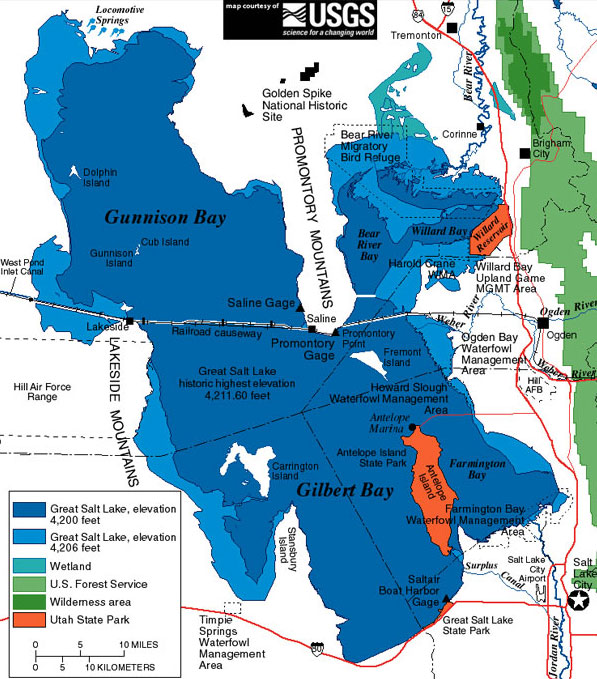 “I think people are waking up to the fact that it might go away,” Baxter said. One indicator is that more people are realizing the lake has individual importance — the scenery, depicted by amateur artists who now wistfully remember closer shores; hunters prowling the lake’s fringes for generations; workers who see their livelihoods potentially evaporating; sailboat owners whose craft sit idle, unable to launch because there’s not enough water; and so on.
“I think people are waking up to the fact that it might go away,” Baxter said. One indicator is that more people are realizing the lake has individual importance — the scenery, depicted by amateur artists who now wistfully remember closer shores; hunters prowling the lake’s fringes for generations; workers who see their livelihoods potentially evaporating; sailboat owners whose craft sit idle, unable to launch because there’s not enough water; and so on.
“I’m not a person that is prone to drama; I am motivated by the straightforward science,” Baxter said. “But I am seeing people moved by fear for the lake along the Wasatch Front. I am motivated by that.”
The lake, the eighth largest saline lake in the world, has an estimated $1.5 billion economic value and supports about 10 million waterbirds, of about 250 species.
A 2017 Utah State University study estimated than Utahns every year divert 3.3 trillion liters of water from the rivers and streams that feed the lake.
Baxter and others in academia have traced the Great Salt Lake’s natural and human history, hoping that their work will help to inform the ongoing conversation about the lake’s fate.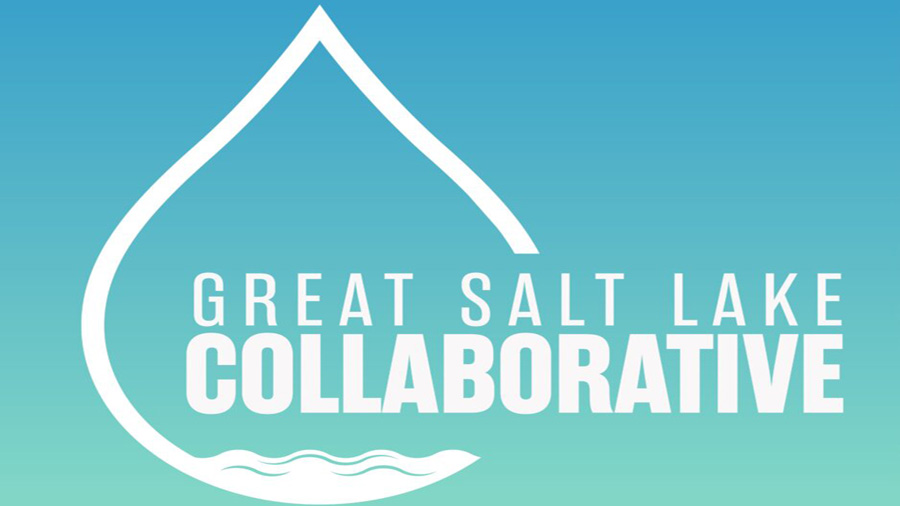
“We’ve done this experiment before,” Baxter said, referring to other terminal lakes, like the Aral Sea, that have shrunk by catastrophic degrees. “It starts with water diversions to feed people, to house people, and then you have a time of drought and the lakes are no longer able to bounce back.”
The Great Salt Lake’s geologic history shows a much larger view than the disappearance of the freshwater Lake Bonneville, which lost enormous volume about 15,000 years ago, its remnant being the current stressed saltwater lake. Baxter said that was only the most recent stupendous transformation — over the last 800,000 years, “large lake episodes have been the norm.” Water in the Bonneville basin over geologic time has risen and fallen repeatedly.
In her 2018 study “Great Salt Lake microbiology: a historical perspective,” Baxter describes humans’ impacts on the lake and how the body of water’s nature has been altered by upstream consumption, diversions such as Farmington Bay and Willard Bay, and industry.
Humans likely have been in Utah since the Pleistocene epoch, between 15,000 to 20,000 years ago, the high point of Lake Bonneville, according to Baxter’s manuscript, which in part draws upon the work of numerous scientists and historians.
Lake Bonneville would have given the region’s inhabitants an abundant source of freshwater fish. As the lake changed over time, humans would have moved in tune with the changing shorelines, hunting, fishing, and foraging.
The Fremont native peoples buried their dead during their time around the Great Salt Lake’s wetlands and along the Bear River in the period of 400 to 1000 AD, as shown by anthropology and archeology studies. The Shoshone and Utes lived on the lake’s north side and the Goshutes roamed along the lake’s southern reaches.
In 1824, explorer Jim Bridger floated down the Bear River and into the Great Salt Lake, claiming its modern discovery. But historians have reported that French-Canadian trapper Etienne Provost beat Bridger to the Great Salt Lake by a few months.
The John C. Fremont expedition in 1843 mapped and described the region’s topography, including the lake’s islands — one of which bears his name — and reported on its mineral and biological content. In 1849, civil engineer Howard Stansbury’s team conducted a wider study of the lake’s geography, natural history, minerals, and water chemistry. Stansbury also is immortalized by an island named after him.
The 1847 arrival of the pioneers of The Church of Jesus Christ of Latter-day Saints heralded what would become today’s significant population growth and associated human impacts on the lake.
The pioneers noted that the Salt Lake Valley’s geography paralleled the Holy Land’s in the Middle East. According to the church in a 1997 citation, the similarity generated a sense that Salt Lake was a land for a “chosen people, just as the Holy Land was seen as the promised land” in biblical times.
Mineral extraction, agriculture diversions, and shortcuts for the railroad eventually would affect the previously pristine lake as the settlement grew. Minerals obtained today are used for road and softener salt, magnesium chloride for steel production, and potassium sulfate for fertilizer.
Those industries diverted and dammed and created evaporation ponds. Other damming projects created vital bird habitats, but they too diverted water that before would have reached the lake.
The brine shrimp industry began booming in the 1970s, but increasing salinity in the shrinking lake threatens the enterprise. However, Baxter pointed to cooperation between the industry and the Utah Division of Wildlife Resources to ensure the lake is not overharvested.
With the combination of climate change and assorted human impacts, “Now we’ve got this lake set up to fail,” Baxter said. “But I’m really buoyed by what happened in the Legislature. It was unanimous, bipartisan. There was a lot of lake love going on. It was beautiful.”
She urged people to look at the array of reasons they should care about the lake. “If you don’t care about the migratory birds, you might care about what the dust will do to air quality. We all need to be doing not one thing, but everything we can do to value water getting into this lake.”

